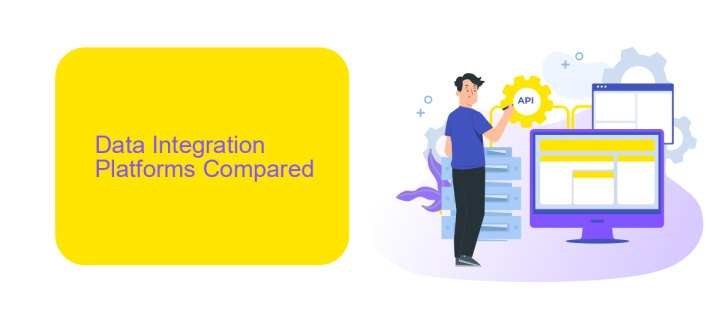Data Integration Reviews
In today's data-driven world, seamless data integration is crucial for businesses to gain actionable insights and maintain a competitive edge. This article reviews various data integration tools and platforms, evaluating their features, performance, and ease of use. Whether you're a data analyst, IT professional, or business leader, our comprehensive analysis will help you choose the best solution to meet your organization's needs.
Introduction
Data integration is a critical process for businesses aiming to unify disparate data sources into a cohesive, actionable dataset. This process ensures that data from various systems, such as databases, applications, and cloud services, can be seamlessly combined to provide a comprehensive view of business operations. Effective data integration enables better decision-making, enhances operational efficiency, and supports advanced analytics.
- Combining data from multiple sources
- Ensuring data consistency and accuracy
- Facilitating real-time data access
- Supporting compliance and data governance
One of the tools that significantly simplifies the data integration process is ApiX-Drive. This service allows businesses to automate the transfer and synchronization of data between various applications and systems without requiring extensive technical expertise. By leveraging ApiX-Drive, companies can streamline their data workflows, reduce manual data entry, and ensure that all their systems are up-to-date with the latest information. As a result, businesses can focus more on strategic initiatives rather than getting bogged down by data management challenges.
Data Integration Platforms Compared

Choosing the right data integration platform can significantly impact the efficiency and success of your data management strategy. Popular platforms like Talend, Informatica, and MuleSoft offer robust features for ETL processes, data synchronization, and real-time integration. Talend is known for its open-source flexibility and extensive community support, making it a favorite among developers. Informatica excels in handling large-scale data operations with its advanced data governance and security features. MuleSoft, on the other hand, stands out for its API-led approach, enabling seamless connectivity across various applications and data sources.
Another noteworthy platform is ApiX-Drive, which simplifies the integration process with its user-friendly interface and pre-built connectors. ApiX-Drive is particularly beneficial for businesses looking to automate workflows without extensive coding. It supports a wide range of applications, from CRM systems to social media platforms, ensuring that data flows smoothly across different services. By comparing these platforms, businesses can identify the best solution to meet their specific data integration needs, balancing factors like ease of use, scalability, and cost-effectiveness.
Choosing the Right Data Integration Solution

Choosing the right data integration solution is crucial for ensuring seamless data flow and operational efficiency. The right solution should align with your business needs, technical requirements, and future scalability. Here are some key factors to consider when selecting a data integration tool:
- Compatibility: Ensure the tool supports all your data sources and destinations, including databases, applications, and cloud services.
- Ease of Use: Look for user-friendly interfaces and features that simplify the integration process, such as drag-and-drop functionality.
- Scalability: Choose a solution that can grow with your business and handle increasing data volumes and complexity.
- Real-time Integration: Opt for tools that offer real-time data processing to keep your information up-to-date.
- Support and Documentation: Reliable customer support and comprehensive documentation can significantly ease the implementation and troubleshooting processes.
One such solution that meets these criteria is ApiX-Drive. It offers a wide range of integrations, user-friendly interfaces, and robust support, making it an excellent choice for businesses of all sizes. By carefully evaluating your options and considering these factors, you can select a data integration solution that best fits your organizational needs.
Case Studies and Customer Reviews

Data integration is a critical component for businesses aiming to streamline their operations. One of the companies that has successfully implemented data integration solutions is TechCorp. They utilized ApiX-Drive to connect their CRM system with various marketing tools, resulting in a 30% increase in lead conversion rates.
Another notable example is HealthPlus, a healthcare provider that integrated patient management systems with billing software using ApiX-Drive. This integration reduced administrative workload and improved patient satisfaction by 25%.
- TechCorp: Increased lead conversion rates by 30% using ApiX-Drive.
- HealthPlus: Achieved a 25% improvement in patient satisfaction through system integration.
- RetailChain: Enhanced inventory management and customer experience with seamless data flow.
Customer reviews highlight the ease of use and reliability of ApiX-Drive. Users appreciate the platform's ability to connect multiple systems without requiring extensive technical knowledge. Overall, ApiX-Drive proves to be a valuable tool for businesses looking to optimize their data integration processes.
Conclusion and Recommendations
In conclusion, data integration is a critical component for modern businesses striving to unify disparate data sources and streamline operations. Effective data integration not only enhances data accuracy but also provides actionable insights that drive informed decision-making. The reviews indicate that while numerous tools are available, selecting the right one depends on specific organizational needs, data volume, and integration complexity.
For organizations seeking a robust and user-friendly solution, ApiX-Drive stands out as a highly recommended service. Its intuitive interface and extensive range of integrations simplify the process, making it accessible even for those with limited technical expertise. By leveraging such platforms, businesses can achieve seamless data flow, reduce manual effort, and ultimately enhance their operational efficiency. It is advisable to assess your unique requirements and conduct thorough evaluations to identify the most suitable data integration tool for your enterprise.
FAQ
What is data integration and why is it important?
What are the common challenges faced during data integration?
How can I ensure the quality of data during integration?
What are the benefits of using automated data integration tools?
How do I choose the right data integration tool for my needs?
Routine tasks take a lot of time from employees? Do they burn out, do not have enough working day for the main duties and important things? Do you understand that the only way out of this situation in modern realities is automation? Try Apix-Drive for free and make sure that the online connector in 5 minutes of setting up integration will remove a significant part of the routine from your life and free up time for you and your employees.

